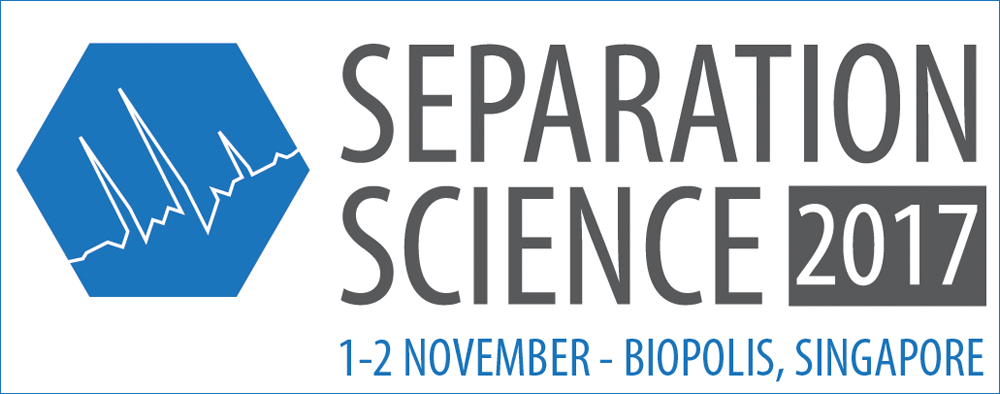Modern HPLC/UHPLC for Practising Scientists
 When: 30-31 October, 2017
When: 30-31 October, 2017
Duration: 1 or 2 days
Presenter: Michael Dong (MWD Consulting, USA)
EARLY BIRD RATE (ends 31 August)
Full 2-day course: USD 875 (standard rate - USD 975)
1-Day course (either day): USD 575 (standard rate - USD 675)
This intermediate 2-day workshop will provide the analytical scientist with a clearer understanding and a solid working knowledge of the concepts, instrumentation, columns, pharmaceutical applications and practices (method development, HPLC operation and troubleshooting) of modern HPLC and UHPLC (ultra-high-pressure liquid chromatography). The focus is on its practice in pharmaceutical analysis of small molecule drug substances and drug products. This workshop is divided into two 1-day sessions which allows attendees to register separately if desired. The first day is fundamentals and small molecule drug applications. The second day is UHPLC, method development, troubleshooting and other applications including characterization/QC of recombinant biologics.

Who Should Attend
Analysts, scientists, researchers, and managers in pharmaceutical and other industries who want to get an updated overview of fundamentals and best practice of modern HPLC/UHPLC in pharmaceutical analysis and other applications including HPLC method development, operation and troubleshooting. A basic understanding of chemistry and HPLC with some hands-on experience is assumed.
Learning Outcomes
- A better understanding of the fundamentals of HPLC and UHPLC
- Best practices in method development, troubleshooting and sample analysis
- Applications in pharmaceutical analysis, recombinant biologics and other areas (food, environmental, polymers)
Agenda
Day 1: Modern (u)HPLC 1: Fundamentals and Small Molecule Drug Applications
Modern Concepts
- Introduction: The chromatographic process, advantages and limitations, and chromatographic modes (NPC, RPC, IEC, SEC)
- Concepts: Retention factor, separation factor, column efficiency, resolution, tailing factor, the resolution equation, the linear solvent strength theory, and column void volume
- Mobile phase factors (organic modifiers, pH, buffers), mass spec compatibility, isocratic and gradient separations, operating parameters (Flow, gradient time, column temperature), peak capacity, references
HPLC Columns, Trends and Selection Guides
- Column fundamentals: Glossary and abbreviations, Characteristics and types, packing characteristics (support type, particle size, pore size), bonded phases, end-fittings, plate height, the van Deemter equation, and an estimation of column efficiency
- Trends: Trends of shorter and smaller columns and the use of high-purity silica, traditional and novel bonding chemistries, concept of “orthogonality”, listing of common RPC columns, column selection guide
- Newer column types: Hybrids, charged surface hybrids, HILIC, sub-3 and sub-2 µm, and superficially porous particles (SPP)
HPLC instrumentation and Operating Principles
- System, Pump and Autosampler. Integrated vs. modular system, solvent delivery system, low-pressure vs. high-pressure mixing, dwell volume and ramification, pump trends, manual injection valve, autosampler types and trends
- Detectors: Operating principles of UV/Vis detection and characteristics, monitoring wavelength selection, photodiode array detector (DAD), newer detectors for non-chromophoric analytes (ELSD, CAD and CLND)
- MS, CDS, peak integration strategy, and Instrument Bandwidth. Mass spectrometer (MS), types and ESI interface, Data Chromatography System (CDS), concept of instrumental bandwidth (extra-column bandbroadening), loss of column efficiency vs. column size
Pharmaceutical Analysis of Small Molecule Drugs
A brief overview of pharmaceutical discovery/development, Chemistry, Manufacturing and Control (CMC), analytical development and quality control in small molecule drugs development, potency assay, stability-indicating method, stability study, dissolution testing, chiral separations, and certificates of analysis of drug substance and reference materials, OTC products with multiple actives, herbal products, pharmaceutical counterions and excipients
Day 2: Modern (u)HPLC 2: UHPLC, Method Development, Troubleshooting and Other Applications
Other HPLC Applications including Recombinant Biologics
- Food: sugars, fats, organic acids, and additives.
- Environmental: US EPA methods, pesticides, and PAHs.
- Chemical: GPC, plastics, and ion-chromatography.
- Bioseparations and life sciences: proteins, peptides, peptide mapping, amino acids, oligonucleotides, nuclei acids, and PCR products.
- Characterization and QC of recombinant biologics (Monoclonal Antibodies)
UHPLC: Concept, Perspectives, Practice and Potential Issues
- Overview and perspectives, UHPLC concepts (the need for high pressure, void volume, peak volume, instrumental bandwidth), UV flow cell design, dwell volume
- Benefits and case studies: very fast separations with good resolution, very high resolution analysis of complex samples, facilitating rapid method development, flexibility to customize resolution
- Potential issues and how to mitigate (viscous heating, operating nuances, compatibility to existing methods, injection precision, detector sensitivity vs. mixing volumes), method translation from HPLC to UHPLC and vice versa using geometric scaling, how to transition from HPLC to UHPLC, end-fittings
HPLC Method Development and Validation
- Tradition strategy for HPLC method development
- 3-pronged template approach for rapid method development
- Use of a universal generic gradient method for assay of multiple NCEs and stability-indicating assays with simple adjustments
- A brief overview of method validation
HPLC Operation and Troubleshooting
- Mobile phase and sample preparation and best practice in HPLC operation
- Problem diagnosis and troubleshooting guide with case studies
- Diagnosing and solving problems (pressure, baseline, peak, data performance)
The Presenter
Dr. Michael W. Dong is a principal consultant in MWD Consulting focusing on consulting and training services on HPLC/UHPLC, pharmaceutical analysis and drug quality. He was formerly Senior Scientist in Analytical Chemistry and Quality Control at Genentech, Research Director at Synomics Pharma, Research Fellow at Purdue Pharma, and Senior Staff Scientist at Applied Biosystems / Perkin-Elmer. He holds a Ph.D. in Analytical Chemistry from the City University of New York, and a certificate in Biotechnology from U. C. Santa Cruz. He has 100+ publications including a bestselling book on chromatography (Modern HPLC for Practicing Scientists, Wiley). He is an editorial advisory board member of LCGC magazine, American Pharmaceutical Review and Chinese American Chromatography Association.
Recommended textbook:
M. W. Dong, Modern HPLC for Practicing Scientists , Wiley-Interscience, Hoboken, New Jersey, 2006 (ISBN-10: 047172789X). List price at $92 and available from Amazon or John Wiley.


